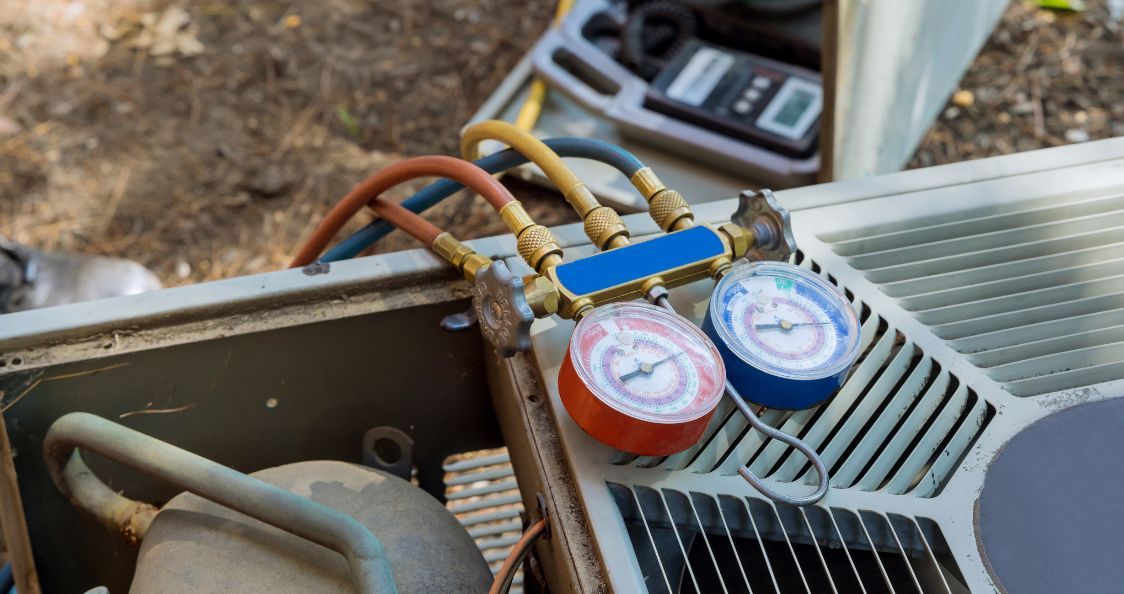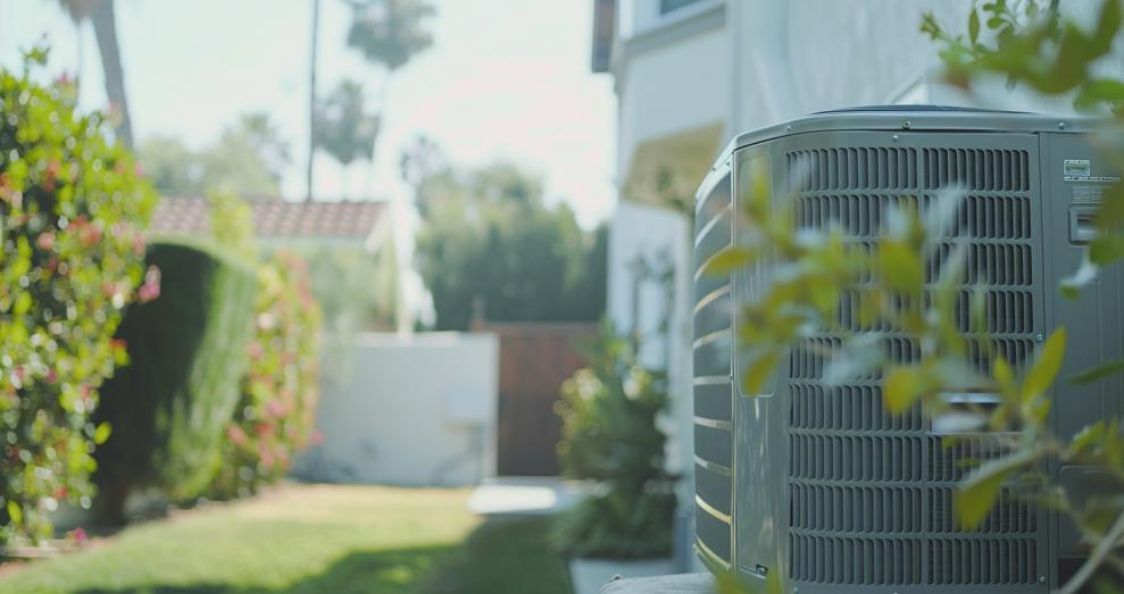
Expert Strategies for Effective AC Repair: A Homeowner’s Guide
TL;DR: Learn to troubleshoot common AC issues with our guide, from cleaning filters to unclogging drain lines. DIY repairs can save money, but know when to call professionals for electrical or refrigerant problems. Clarke & Rush offers expert HVAC services to keep your system running smoothly year-round.
Walking into a cool, air-conditioned home after a day in the sun can be a huge relief. This modern convenience is often overlooked until a problem arises. Then, the race against the heat begins. The decade of 2012–2021 was the hottest one on record since thermometer-based recordings began. It’s scary thinking that future summers might be even hotter.
With a bit of knowledge and caution, many minor AC issues are within the realm of DIY repairs.
But, as we’ll explore, there’s a line where the toolbox should close, and the job should be left to experts. This guide will help you better understand your AC, provide you with some expert strategies for effective AC repair, and recognize when it’s time to enlist professional help.
Understanding Your AC System
Air conditioners, whether simple window units or complex central systems, operate on the same basic principles of refrigeration, involving a cycle that cools your home by removing heat from indoor air and releasing it outdoors. Each component in your AC system plays a crucial role in this cycle, ensuring your home stays cool and comfortable.
- Compressor. Frequently dubbed as the air conditioning system’s core, the compressor plays a crucial role in circulating refrigerant throughout the unit. It pumps the refrigerant gas to a high pressure and temperature, initiating the refrigeration cycle.
- Condenser. This component consists of coils (over which the refrigerant flows) and a fan that blows outdoor air across the coils. This process releases the absorbed heat to the outside air, cooling the refrigerant down and converting it back into a liquid form.
- Expansion Valve. Situated between the condenser and the evaporator, the expansion valve regulates the refrigerant’s entry into the evaporator by decreasing its pressure, thus enabling it to expand and cool prior to reaching the evaporator.
- Evaporator. Located within the indoor unit, the evaporator features coils designed to enable the refrigerant to draw heat from the air inside. As the refrigerant evaporates and absorbs heat, the air blown over the coils is cooled and then circulated back into your home.
- Thermostat. This is the user interface and control system for your AC. It tracks your home’s temperature and instructs the air conditioner to activate or deactivate, aligning with your preferred comfort setting. It’s the component that ensures your environment remains at the temperature you’ve set.
Understanding these components and their functions within the refrigeration cycle is crucial for anyone looking to maintain their AC system effectively or tackle basic troubleshooting.
DIY AC Repair Strategies
DIY AC repairs offer an opportunity to save on minor fixes and deepen your understanding of how your home’s cooling system works. This guide integrates advice on identifying common AC problems, effective troubleshooting tips, and straightforward repair techniques.
Cleaning or Replacing the Air Filter
An obstructed air filter impedes airflow, forcing the system to exert more effort, potentially resulting in higher energy expenses and reducing the longevity of your unit. First, locate the filter, which is typically found in your indoor unit. It could be behind a return air grille on the wall or ceiling or inside the air handler itself.
Disposable filters need replacing, while reusable ones can be cleaned. For disposables, simply insert the new filter, making sure it’s facing the correct direction, indicated by an arrow on the frame. For reusable types, carefully wash with water and ensure it’s fully dried before putting it back in place.
Unclogging the Condensate Drain Line
The condensate drain line, usually a PVC pipe leading from the indoor unit to the outside, can become clogged over time. To clear a clog, locate the drain line and look for visible blockages at the end of the line outside. You can use a wet/dry vacuum to suction out the clog from the end of the line or flush the line with a mixture of bleach and water to clear out mildew and algae.
Cleaning the AC Coils
Both the evaporator and condenser coils can accumulate dirt, reducing the system’s ability to cool your home. Ensure the unit is powered off at both the thermostat and the breaker before beginning.
For the evaporator coil, remove the necessary panels from your indoor unit. For the condenser coil, access is through the outdoor unit. Using a coil cleaner spray, follow the bottle’s instructions to clean the coils. Rinse carefully to avoid using too much water, especially indoors.
Checking and Straightening the Fins
For the outdoor unit, remove the outer cover to access the condenser fins. For the evaporator fins, access is from inside the air handler. Carefully realign any misshapen fins using a fin comb that corresponds to the spacing of your coils.
Resetting the Thermostat
Consult your thermostat’s manual for specific reset instructions, which might involve holding down a reset button or navigating through a menu.
Verify that the thermostat is on the “cool” setting and the temperature is set lower than the ambient room temperature. Should your thermostat operate on batteries, consider replacing them to eliminate power problems as a potential malfunction source.
Safety Tips for DIY AC Repairs
Always ensure the power to your AC unit is turned off at the breaker before you start any repairs to avoid electrical hazards. Wear protective gloves and glasses while handling internal parts to avoid any injuries. It’s important to remember not to handle refrigerant or conduct major electrical repairs yourself. These tasks require professional expertise and equipment.
When to Call the Professionals
Certain situations necessitate professional expertise due to the complexity of the system, potential safety risks, and the need for specialized tools or knowledge. Recognizing the right moment to seek professional help is essential to maintain your AC system’s durability, performance, and safety.
Complex Electrical Issues
Electrical problems within an AC system can range from simple fixes like a tripped breaker to more severe issues such as faulty wiring or malfunctioning controls.
While resetting a tripped breaker is within the realm of DIY, diagnosing and repairing deeper electrical issues requires a professional. Improper management of electrical parts may cause additional harm to your system or, more alarmingly, present significant safety hazards.
Refrigerant Handling
Refrigerant is crucial for the cooling process, but handling it requires specialized training and certification. If your AC isn’t cooling efficiently and you suspect a refrigerant leak or believe the system needs a refrigerant refill, it’s time to call the experts. Improper handling of refrigerant can cause damage to the environment and your AC system and can even pose a risk to your health.
Regular Maintenance and Inspections
Even if your AC seems to be running smoothly, regular professional maintenance and inspections are vital. Professionals can perform tasks beyond the scope of regular DIY maintenance, such as checking refrigerant levels, ensuring electrical components are in good condition, and cleaning internal parts that are not accessible without dismantling the unit.
Final Words: Expert Strategies for Effective AC Repair
Concluding our dive into expert strategies for effective AC repair, it’s clear that while homeowners can tackle many issues on their own, there are times when professional assistance is necessary.
For those instances, Clarke & Rush presents an ideal solution. We deliver an extensive array of services, including routine AC upkeep, repairs, installations, and emergency responses, earning a distinguished reputation for dependability, skill, and outstanding customer care.
Our team of certified experts is prepared to tackle any HVAC issue, guaranteeing optimal system performance throughout the year. Contact us today and ensure your system’s longevity and efficiency with our expert care!
Other Blogs You May Be Interested In
Categories
- About Clarke & Rush (2)
- AC Repair (1)
- AC Replacement (8)
- AC unit Maintenance (14)
- Air Quality (3)
- Boilers (1)
- Commercial HVAC (4)
- Commercial Plumbing (2)
- Furnace (3)
- Furnace Maintenance (2)
- Furnace Repair (4)
- Green Homes (3)
- Gutter Repair (1)
- Gutter Replacement (5)
- Heat Pump (1)
- Home Energy Tips (3)
- Home Improvement (6)
- HVAC (17)
- HVAC Replacement (7)
- Insulation (3)
- Kitchen Plumbing (2)
- Plumbing (4)
- Plumbing Problems (9)
- Reducing Energy Costs (6)
- Repiping Services (3)
- Residential HVAC (48)
- Residential Insulation (4)
- Residential Plumbing (33)
- Residential Windows (6)
- Sewer Line (2)
- Uncategorized (10)
- Water Heaters (5)
- Water Line Repair (1)
- Water Treatment (1)
- Window Installation (8)
- Window Instllation (2)
- Window Replacement (7)
- Windows (8)











Leave a Reply